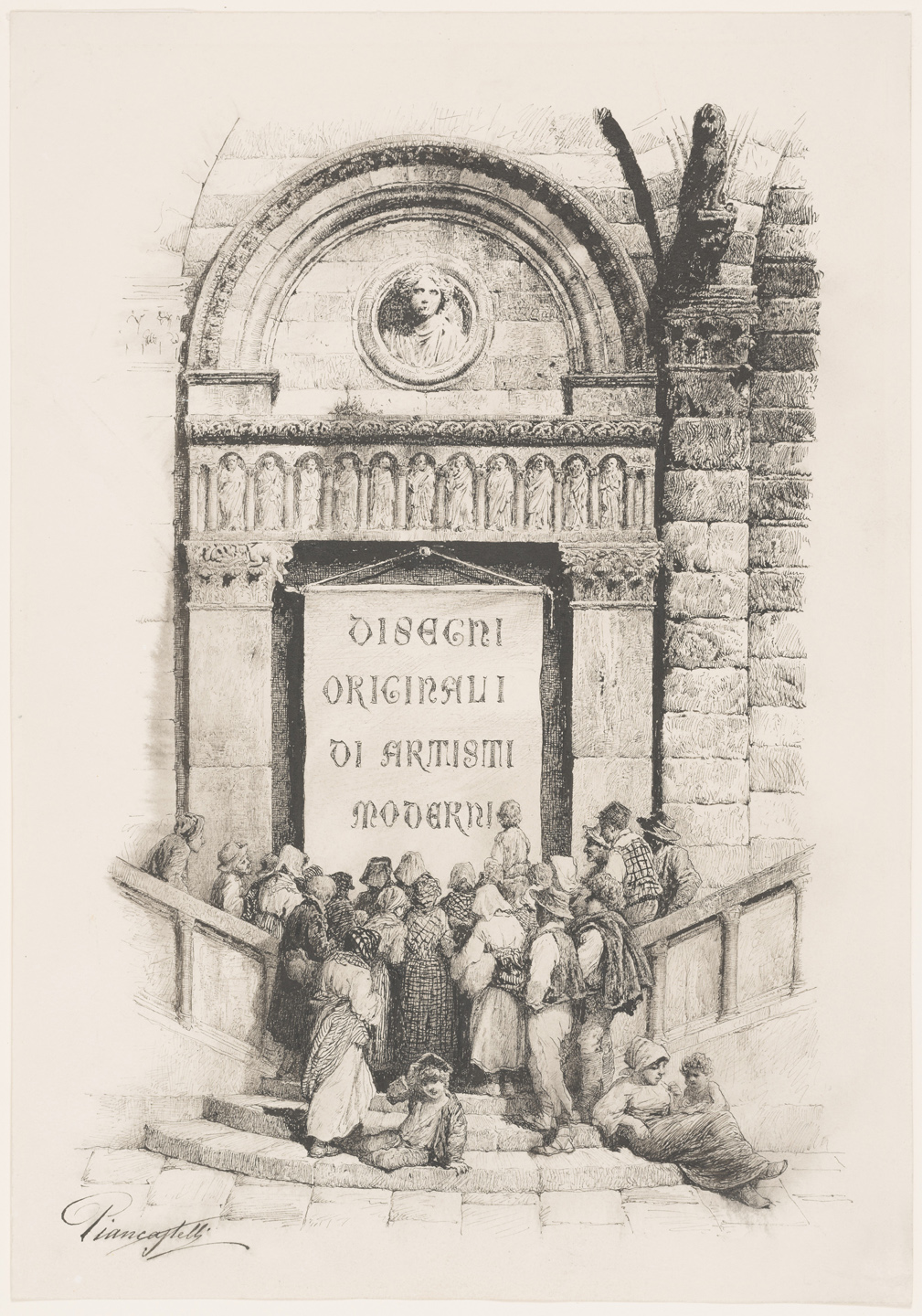While this drawing is the sole example in the Cooper Hewitt’s collection of Giovanni Piancastelli’s work as an artist, his impact on the museum as a collector is astronomically greater: over 12,200 of Cooper Hewitt’s drawings and prints came directly or indirectly from his personal collection. Born in a town near Ravenna, Italy in 1845, Giovanni Piancastelli showed artistic talent from a young age and was apprenticed to a friar at a local convent where he learned to draw and paint. Piancastelli attended art and design academies in Faenza and then in Rome, where he won awards for his skill in drawing architecture and nude figures.[1]
When Piancastelli returned to Rome in 1871 after his military service, he began his important and long-lasting association with the noble Borghese family. The prince Marcantonio Borghese hired Piancastelli to teach drawing and painting to his children. Piancastelli also repaired and decorated the Borghese family’s villas. Soon the Borghese and other noble families with whom Piancastelli was acquainted began seeking his advice regarding the acquisition of art for their private collections.[2] In return for his services, Piancastelli was paid primarily in drawings and prints. He sold any that did not interest him and acquired other works to keep or to sell later for profit.[3] After Marcantonio Borghese’s death in 1886, Piancastelli was tasked with transferring the family’s collection to the Villa Borghese in Rome and cataloguing the works.[4] He was also involved in the opening of the Galleria Borghese to the public, and the sale of the Galleria to the Italian government in 1902.
The collection Piancastelli amassed was impressive for both is breadth (16th-19th centuries) and its quality. He had a certain appreciation for artists who were not yet well regarded, among them the architect and artist Felice Giani from whom he collected over a thousand drawings, now held in Cooper Hewitt’s collection. In 1901, Piancastelli sold about half of his collection (3,620 drawings) to the Hewitt sisters.[5] The rest he sold in 1905 to the Brandegee family, who live in Boston. Cooper Hewitt, at that time the Cooper Union Museum, acquired these works from the Brandegees in 1938, bringing the total number of works from Piancastelli’s collection to 12,253.[6]
Piancastelli continued to work as an artist throughout his life. He worked in a wide variety of media, and is supposed to have painted over 300 portraits as well as several self-portraits, one of which he donated to the Galleria Borghese in 1925. Piancastelli painted many religious subjects as well, a passion of his since his early training at the convent.[7] Piancastelli’s works were shown in international exhibitions of art including ones in Rome, Paris, Monaco, and Bologna in the 1870s and 1880s.[8] Always the collector, Piancastelli started to build a new collection of drawings and prints when he relocated to Bologna in 1906. This collection was dispersed after his death in 1926.[9]
[1] Samantha De Santi, Valentino Donati, and Gian Carlo Bojani, Giovanni Piancastelli: artista e collezionista (1845-1926) (Faenza: Edit Faenza, 2001), 15-17.
[2] Ibid., 22, 93.
[3] Ibid., 95.
[4] Ibid., 25.
[5] Ibid., 93.
[6] Ibid., 101-102.
[7] Ibid., 46, 31, 52.
[8] Ibid., 22.
[9] Ibid., 27, 31.
Vianna Newman was a Peter A. Krueger Intern in the Department of Drawings, Prints, and Graphic Design in the summer of 2015. She has a B.A. in Rome and the Renaissance and Italian from Indiana University.

One thought on “Giovanni Piancastelli, Collector and Artist”
james musengo on January 17, 2018 at 10:52 am
What are his paintings worth?